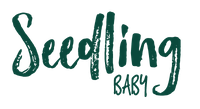$13.95 FLAT RATE SHIPPING | FREE OVER $160 AU WIDE
$13.95 FLAT RATE SHIPPING | FREE OVER $160 AU WIDE

Mould Prevention
March 06, 2017 2 min read
Mould is a horrible fungus that can affect our cloth nappies when we least expect it. It can stain and deteriorate fabric and precipitate a plethora of health problems, so it is imperative that you find the source and eradicate it.
In layman’s terms, the formula for mould is pretty simple. Moisture + warmth + time. Remove one of these factors and you should remove the mould.

PREVENTION IS KEY
Once affected by mould, it can be almost impossible to completely eradicate the stain from a nappy. Frequently the only thing that may fade mould stains (and this over a period of time) is exposure to direct sunlight.
So prevention is key! Here is a quick guide to preventing mould on your nappies and in your home.
- Make sure you wash at least every second day. Leaving nappies unwashed for any longer (especially in a sealed bucket or wet bag) makes them susceptible to all sorts of bacterial growth, including mould spores.
- Look at where you keep your dirty nappies. Is it in a dark, humid corner of the laundry? Or up high on the bench with lots of air flowing around it?
- To kill the mould, wash your nappies with half a cup of vinegar and line dry in direct sunlight, with affected side up to the sun.*
- You may have mould in the seal of your washing machine which is contaminating your nappies and clothes. Give your washing machine a good clean every few months. To clean your machine, run it empty on a hot wash with half a cup of white vinegar.
- Check the rest of your house for mould growth and expel it! Use a vinegar/water solution to wipe mould from ceilings, window sills and walls in the wet areas. A 50-50 solution is fine.
- If you can’t get enough sun on your nappies to dry them completely, finish them off in the dryer, in front of a heater or underneath a fan.
*Please Note: Don’t use vinegar on a regular basis as it can damage the waterproofing and elastic of your nappies. Unless your shells actually have mould on them, please don’t include them in the vinegar wash.
DO
- Clean your nappy bucket/bag between each load and leave your bucket out in the sun.
- Leave your washing machine open when not in use, to ensure plenty of air flow.
- Wash every day until the mould issue is under control.
- Dry pail as much as possible. If you need to rinse a soiled nappy, leave it in the laundry tub rather than enclosing it in the pail.
- Make sure your nappies are completely dry. In humid climates, this might mean a short spell in the dryer after they’ve come off the line.
DON’T
- Never use bleach as it can disintegrate the bamboo fibre and cause irritation to your baby.
- Never leave your nappies in the machine overnight. It is much better to wash earlier in the evening and get them on the line; you’ll also get a head start on the next morning.
- Don’t overfill your machine. Give your nappies lots of room to move and clean properly.

Are Reusable Nappies More Environmentally Friendly than Disposables?
April 24, 2024 1 min read

3 Ways to Reduce the Outlay of Starting Cloth Nappies
April 23, 2024 2 min read

Cloth Nappy Council Rebates 2024
April 05, 2024 4 min read
